Abstract
Serum antibody responses to influenza A virus infection were examined in 388 normal subjects during a trial of chemoprophylaxis in an outbreak of influenza A in 1980-1981 in which both A/H1N1 and A/H3N2 viruses circulated. Paired serum specimens obtained over a 6-week period were tested for antibodies to both A/H1N1 and A/H3N2 viruses by conventional hemagglutination inhibition, complement fixation, and an enzyme-linked immunosorbent assay (ELISA). Antibody responses detected by ELISA were determined by calculation of the area generated between titration curves of paired sera (area method), as well as by a conventional endpoint dilution method (endpoint method). Forty-two significant antibody rises were detected; 42 by ELISA (area method), 33 by ELISA (endpoint method), 32 by hemagglutination inhibition, and 13 by complement fixation. ELISA (area method) detected rises more frequently than either ELISA (endpoint method) (P less than 0.01), hemagglutination inhibition (P less than 0.005), or complement fixation (P less than 0.001). Another sensitive assay, the microneutralization test, detected significantly fewer rises (33, P less than 0.025) than the ELISA (area method). In the 42 subjects with ELISA (area method) rises, corroborating evidence of influenza A infection by other techniques (virus isolation, microneutralization, hemagglutination inhibition, or complement fixation tests) were available for 39 (93%). ELISA (area method) rises were subtype specific in all serum pairs in which other documentation of subtype-specific infection was available (38 of 38). Thus, ELISA (area method) was the single most sensitive assay for detection of serum antibody rises in this setting and possessed a high degree of subtype specificity.
Full text
PDF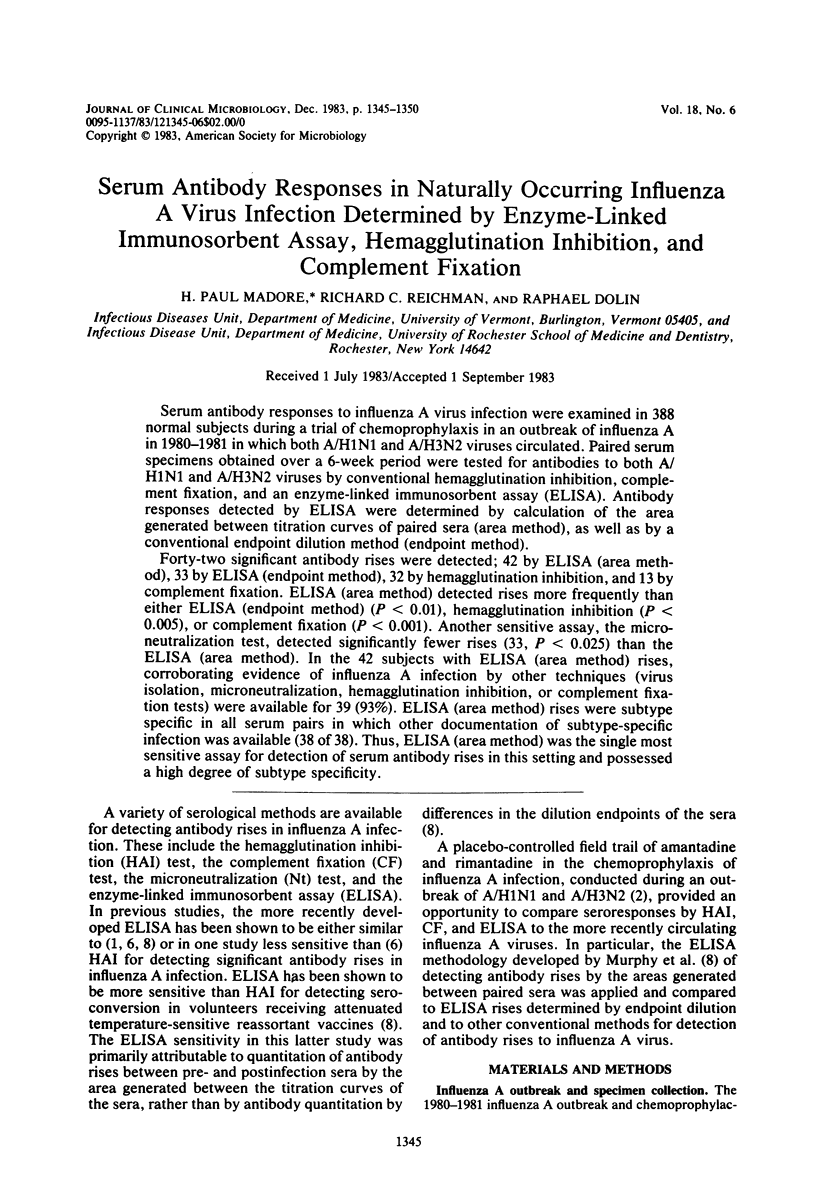
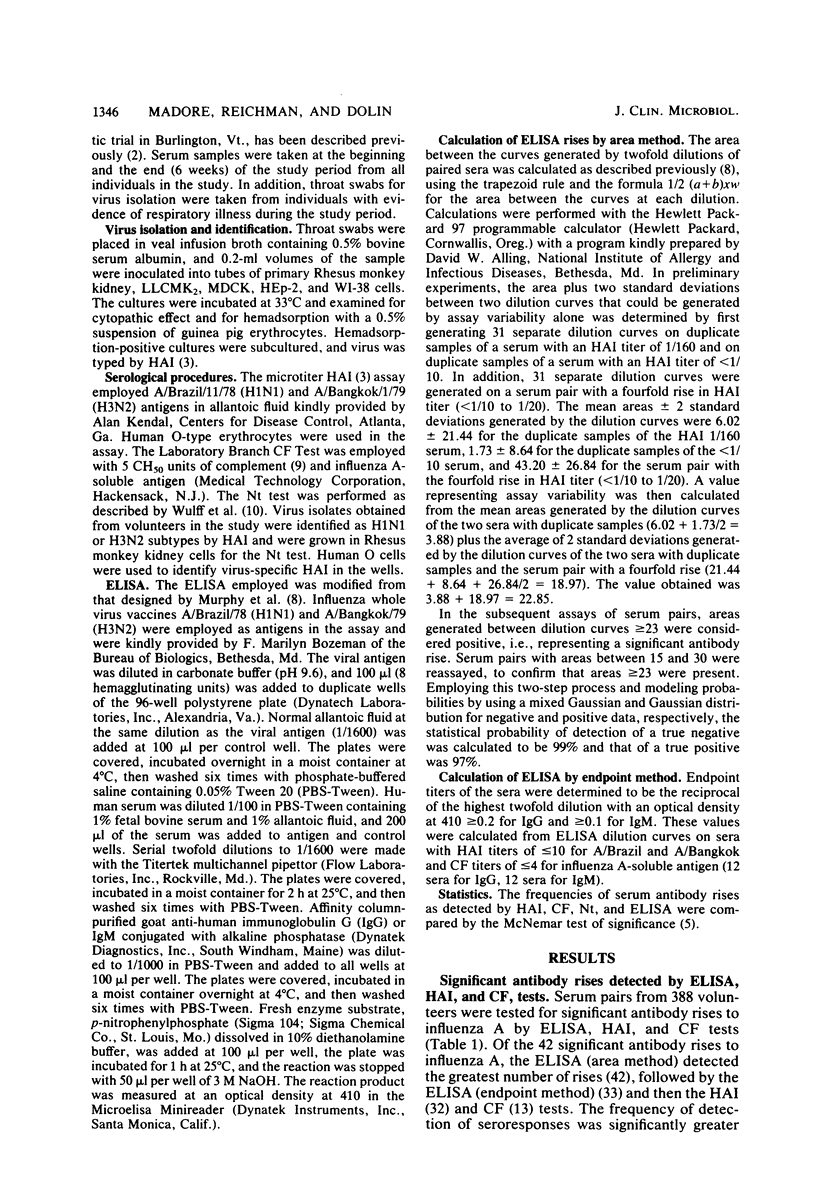
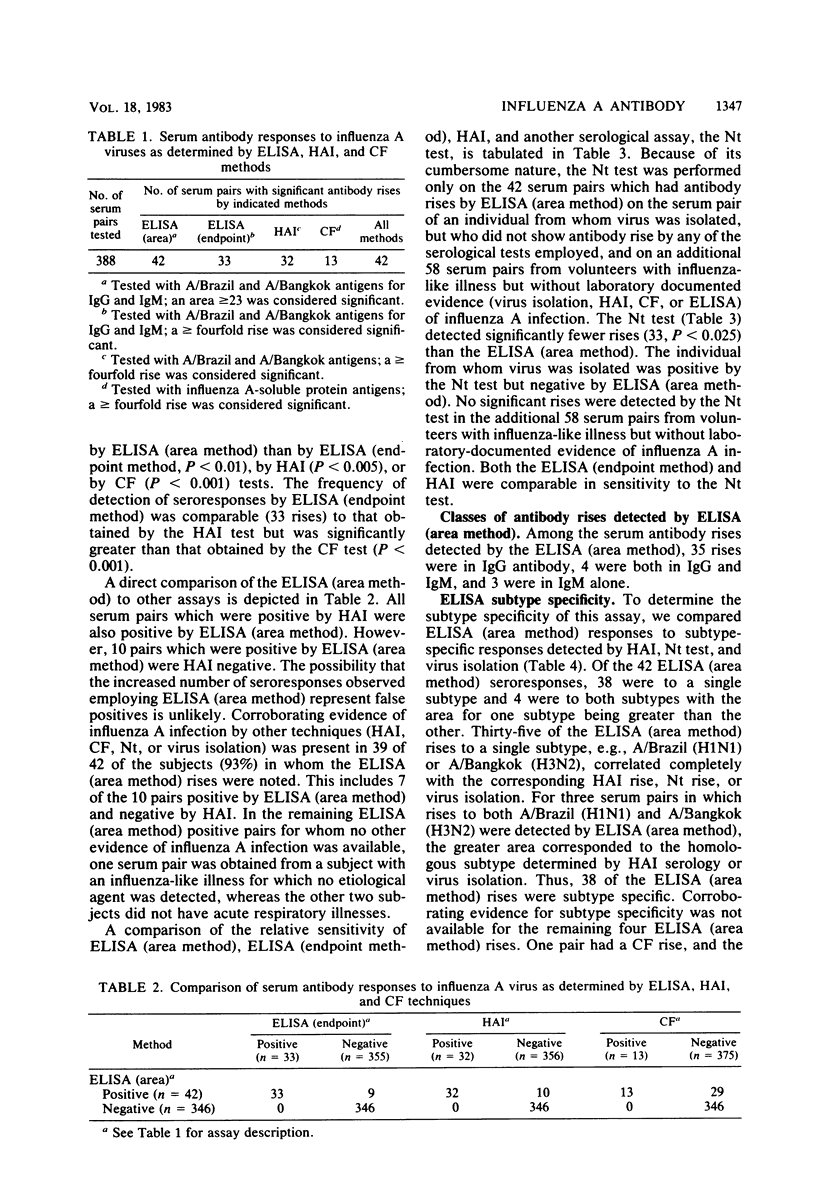
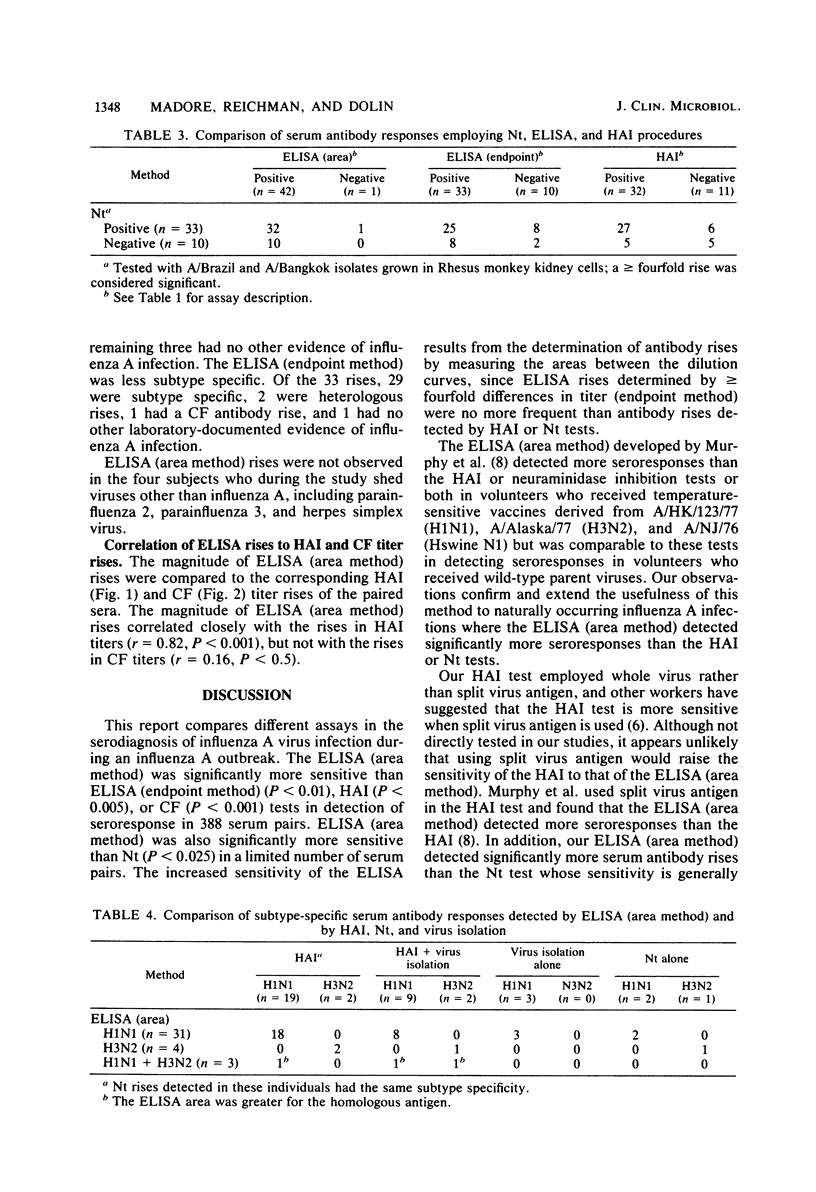
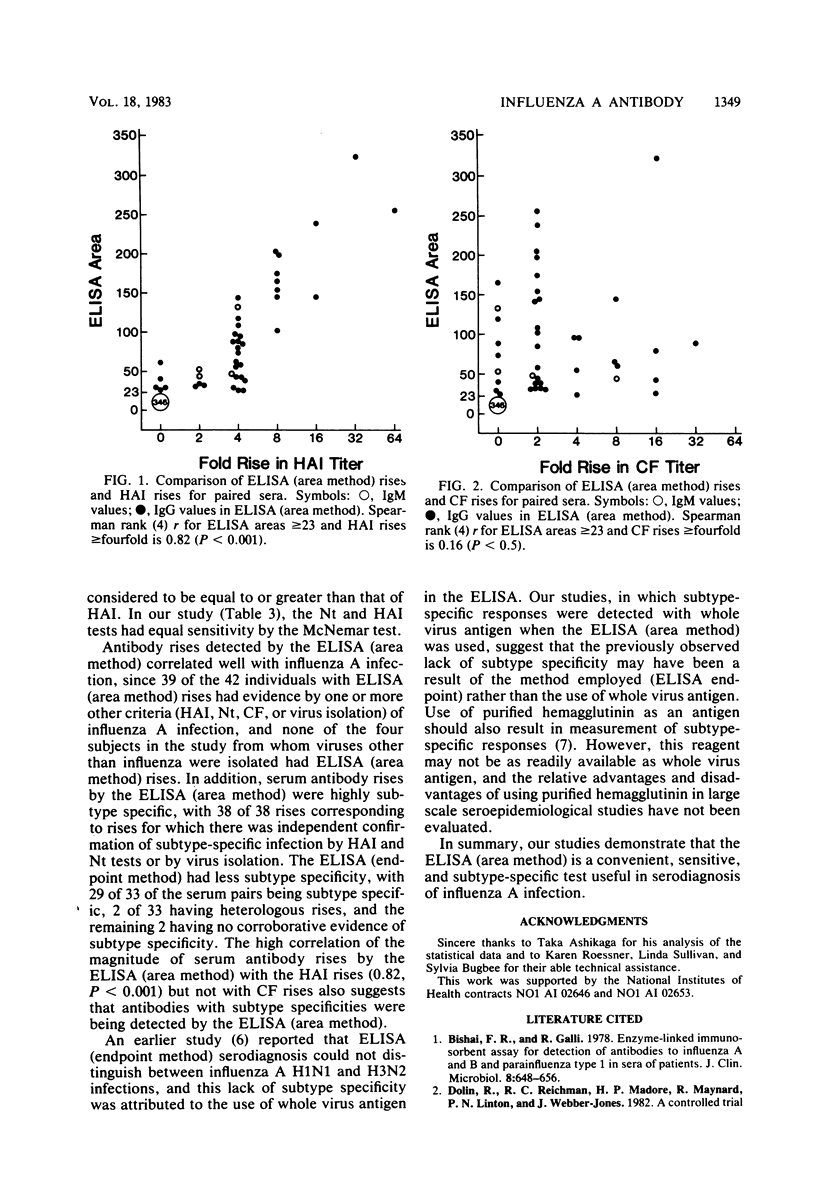
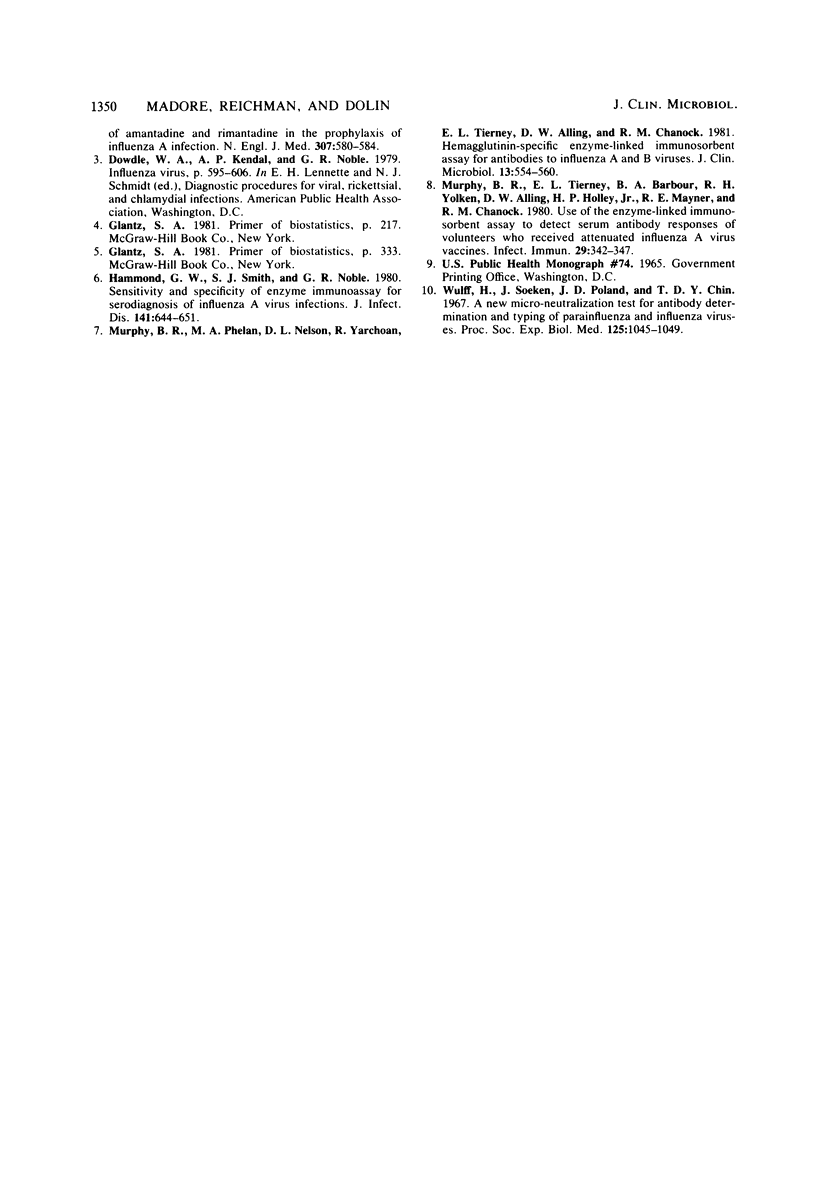
Selected References
These references are in PubMed. This may not be the complete list of references from this article.
- Bishai F. R., Galli R. Enzyme-linked immunosorbent assay for detection of antibodies to influenza A and B and parainfluenza type 1 in sera of patients. J Clin Microbiol. 1978 Dec;8(6):648–656. doi: 10.1128/jcm.8.6.648-656.1978. [DOI] [PMC free article] [PubMed] [Google Scholar]
- Dolin R., Reichman R. C., Madore H. P., Maynard R., Linton P. N., Webber-Jones J. A controlled trial of amantadine and rimantadine in the prophylaxis of influenza A infection. N Engl J Med. 1982 Sep 2;307(10):580–584. doi: 10.1056/NEJM198209023071002. [DOI] [PubMed] [Google Scholar]
- Hammond G. W., Smith S. J., Noble G. R. Sensitivity and specificity of enzyme immunoassay for serodiagnosis of influenza A virus infections. J Infect Dis. 1980 May;141(5):644–651. doi: 10.1093/infdis/141.5.644. [DOI] [PubMed] [Google Scholar]
- Murphy B. R., Phelan M. A., Nelson D. L., Yarchoan R., Tierney E. L., Alling D. W., Chanock R. M. Hemagglutinin-specific enzyme-linked immunosorbent assay for antibodies to influenza A and B viruses. J Clin Microbiol. 1981 Mar;13(3):554–560. doi: 10.1128/jcm.13.3.554-560.1981. [DOI] [PMC free article] [PubMed] [Google Scholar]
- Murphy B. R., Tierney E. L., Barbour B. A., Yolken R. H., Alling D. W., Holley H. P., Jr, Mayner R. E., Chanock R. M. Use of the enzyme-linked immunosorbent assay to detect serum antibody responses of volunteers who received attenuated influenza A virus vaccines. Infect Immun. 1980 Aug;29(2):342–347. doi: 10.1128/iai.29.2.342-347.1980. [DOI] [PMC free article] [PubMed] [Google Scholar]
- Wulff H., Soeken J., Poland J. D., Chin T. D. A new micro-neutralization test for antibody determination and typing of parainfluenza and influenza viruses. Proc Soc Exp Biol Med. 1967 Aug-Sep;125(4):1045–1049. doi: 10.3181/00379727-125-32272. [DOI] [PubMed] [Google Scholar]


